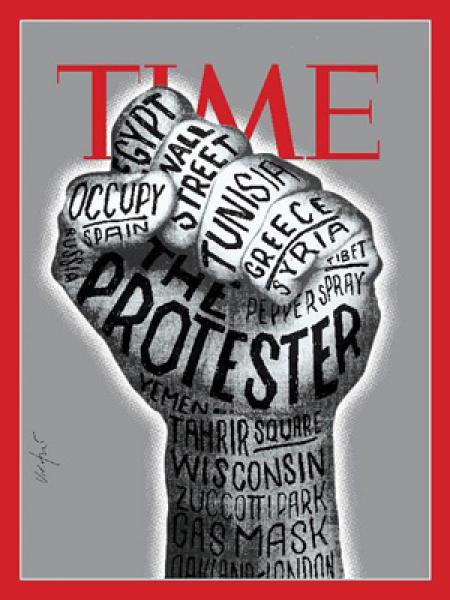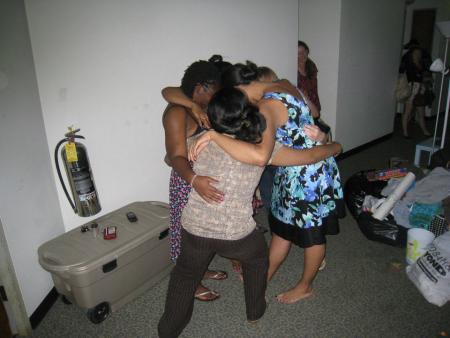Serendip is an independent site partnering with faculty at multiple colleges and universities around the world. Happy exploring!
Collaboration

Zine Workshop with artist Shing Yin Khor
On Wednesday, April 1st, artist Shing Yin Khor along with Professor Shiamin Kwa hosted a Zine Workshop in the new Carpenter Media Lab in conjunction with the East Asian Language and Culture course: Everything But the Table (EALC 345). The Carpenter Media Lab was a great new space for digital collaboration as the students quickly got to work making their own zines within one hour with art supplies scattering the tables.
Though much of Khor's work is printed or sculpted, the internet has become a gamechanger for artists like Khor. Through fundraising platforms like Patreon, artists of all kinds can create sponsorships where their fans can give monetary support in order to receive exclusive blog posts and updates as well as gifts and subscriptions. Furthermore, publishing platforms such as Issuu have made it easier to share zines and publications digitally.

What is MediaThread?
 MediaThread, a project created by the Columbia Center for New Media Teaching and Learning through the Digital Bridges Initiative is a service that allows you to blend your thoughts with multimedia sources and share them with others. MediaThread supports video, images, metadata, and many content websites listed below. Most compatible with Firefox, MediaThread is currently being used by Columbia, MIT, Wellesley, Dartmouth, The American University in Cairo, and many other institutions of higher education.
MediaThread, a project created by the Columbia Center for New Media Teaching and Learning through the Digital Bridges Initiative is a service that allows you to blend your thoughts with multimedia sources and share them with others. MediaThread supports video, images, metadata, and many content websites listed below. Most compatible with Firefox, MediaThread is currently being used by Columbia, MIT, Wellesley, Dartmouth, The American University in Cairo, and many other institutions of higher education.
Who can do what with MediaThread? Through MediaThread...

Half the Sky
Hey everybody, I don't really know if this has any place in this Ecological Imaginings class, but maybe if we can imagine the preservation of women to be a form of ecology, not unlike the preservation of all plant life, animal life.
I just wanted to call everyone's attention to this excellent documentary currently being shown on PBS on Mon & Tues nights at 9:00 PM. I imagine you guys have lots of time to watch films, yeah! But this is an amazing series.
"Half the Sky" about gender based violence.
Here's the link to the first & second segment:
http://video.pbs.org/video/2283557115
http://video.pbs.org/video/2283558278
The Teaching & Learning Initiative: Nepali Style
Hello beautiful Serendip world!
My name is Briana Bellamy, I'm a BMC alum '11. Recently, I returned from an incredible year of living in Nepal, working on a project funded by the Davis Projects for Peace grant. The project was called Sharing Knowledge for Peace, and its basic structure and philosophy grew from something that may be very familiar to some of you: the Teaching and Learning Initiative (TLI). As a sophomore at Bryn Mawr, I became involved with the staff-student branch of the TLI as a student mentor with a wonderful man from transportation services. It completely transformed my experience at Bryn Mawr, and became a huge part of both my sense of community and personal development. The relationships I built through the reciprocal model of the TLI and the deep learning I experienced both in these relationships and in the reflection meeting had a deep impact on me. I went on to become a coordinator for the program, and even wrote my thesis about it, exploring the inner workings of friendship, community, and shared spaces. I knew there was something powerful about the dynamics at play, and I was curious as to how the model of intentional reciprocal teaching and learning relationships could be valuable in other settings.

NGOs in Ghana – intial reflections on group project & trip
While in Ghana, I couldn’t help but think about my group’s discussion of NGOs in Ghana and their work, and compare these things to the realities that we saw on the ground. I still have a lot of questions, but my post is long overdue, so observations + questioning will have to be sufficient for now!
During our project, one of the more resonant questions for me was, “How do NGOs collaborate and is this collaboration successful?” I think this question guided some of my observations during the trip.
Observations: Looking around the Dalun Youth Association (DYA) building, I saw some posters, asked some questions. All this happened very quickly, so I’m not 100% this is the correct information, but I’ll relay what I remember and wrote down.
DYA exists to bring the youth together – students gather here and “because they are together, they are stronger and can advocate for the needs of the community, what they see the community needs to develop” (field notes), like new roads to Tamale (which I would also advocate for, for both selfish and unselfish reasons). DYA uses sports as a tool for development – in this rural community, athletic competition is a perfect way to bring people together, both young and old. Once the people are gathered, the youth can spread their message of change. And this message is much more powerful coming from a vibrant, organized youth group.

interdependence
I’ve been thinking about how useful it is to have so many different majors present in this literacy class and 360 - In a discussion on Tuesday in Psych, many of us were really confused about how to proceed with the unfamiliar psychology terms. But Manya was able to give us a really good explanation - we kind of drilled her for information! Also, Lucy and I were talking about her background in Anthropology this morning - this will be useful in our explorations of culture.
We are a community of many different skill sets - and we can benefit from all of those disciplines when we are open to learning about and from each other. It’s really difficult to ask for help - especially when (often) our previous education calls for independence and individuality. However, knowing your resources and using them effectively - that does not imply dependence, but a kind of fusion or interdependence.

Mass Protests and Crowd Intelligence
In the Digital Humanities Manifesto 2.0, the word “manifesto” from manus or hand helped me relate the mass 2011 protests, such as those in the Arab Spring and Occupy, to the digital humanities. As fists reaching out for freedom and equality against corruption and unemployment in a mass protest, a similar hand reaches out for the freedom of the spoken word and the common share of ideas in the digital humanities. In a protest, a hand is not to be distinguished from the others around it as each one joins the others in a wave of fists for a common cause. Similarly, one person’s words and ideas in the digital platform matter, but how they connect to others' and their derived linkages create the multimedia network of “innovative thinking” that makes up the digital humanities. The emphasis of the ant colony instead of the Ivory Tower in the digital humanities reminded me of a book on complexity science (more about it here) that demonstrates the intelligence of crowds and how ant colony and swarm behavior can be used to determine the logic behind networks.






